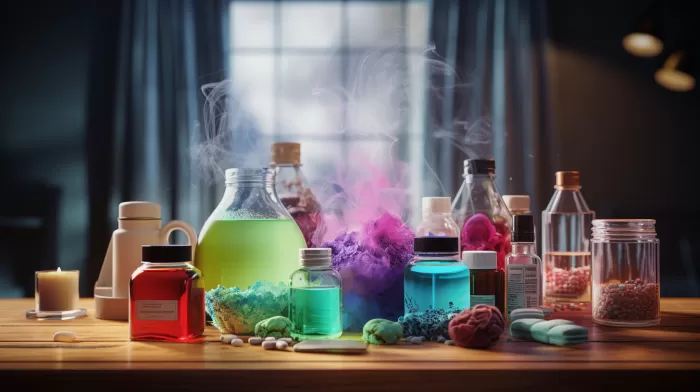Did you know that the most common products you use daily might contain dangerous chemicals capable of causing cancer? Many household items – including those labeled “all-natural” or “green” – are continuously releasing airborne carcinogens that can have long-term effects on your health. These products are all around your home, such as cleaning supplies, laundry detergents, personal care items, and air fresheners. Surprisingly, many carcinogenic ingredients are not even listed on the packaging.
You may wonder about the extent of the presence of these hazardous compounds in our everyday environment. The research at the Melbourne School of Engineering in Australia has an answer to it. Researchers analyzed 37 common household products to better understand their impact on our health.
Uncovering Hidden Threats in Household Products
Their research discovered alarming results: these products emitted 156 different volatile organic compounds (VOCs), with each product giving off an average of 15 VOCs. Out of these, 42 chemicals are classified as hazardous or toxic according to U.S. Federal regulations. In fact, every product analyzed emitted at least one chemical deemed toxic or hazardous.
More concerning, less than 3 percent of the volatile ingredients found in these products were mentioned on their respective material safety data sheets (MSDS) or listed on their labels. The lack of transparency regarding product ingredients means consumers are not fully informed about what they are bringing into their homes. Moreover, our indoor air environments remain unregulated and unmonitored, increasing the risks to health significantly.
Terpenes: The Dangerous Culprit
So, what is the primary source of these VOCs responsible for polluting our indoor environment? The culprit? Terpenes. Terpenes are chemicals present in almost all fragrances found in your everyday household products, from soaps and shampoos to cleaners and air fresheners. They are absent in fragrance-free products, however.
When terpenes react with the ozone in indoor air, they create other airborne pollutants like ultrafine particles and formaldehyde. As a result, a toxic chemical cocktail forms, putting you and your family at risk.
While you may think that switching to greener options could reduce the risk of exposure to harmful chemicals, the study showed that opting for products claiming to be green, natural, or organic might not always be a safer choice. These claims remain largely untested, and the average consumer has no way of verifying these assertions. Additionally, since ingredient transparency remains lacking, you might still be exposed to harmful toxins even if product labels claim otherwise.
Protecting Yourself and Your Loved Ones
So, how can you protect yourself and your family from being exposed to these hazardous indoor air pollutants? Here are some crucial steps you can adopt to minimize risk:
- Opt for fragrance-free products: Choosing fragrance-free alternatives to your usual products can instantly significantly reduce the presence of terpenes in your home.
-
Ventilate your home: Adequately ventilating your living space with fresh air from the outdoors can help dilute the concentration of indoor air pollutants. Open windows and doors or run exhaust fans to improve air circulation.
-
Monitor product usage: When using cleaning products or air fresheners, be mindful of the amount needed for the task at hand. Minimize consumption to limit the release of hazardous chemicals.
-
Research and dissect: Make it a habit to research the ingredients of the products you purchase, avoiding those with hazardous or toxic components. Do not be misled by “natural” or “green” claims on product packaging.
-
Make your air cleaner: Adding air purifiers to your home can help reduce the presence of VOCs and other toxins in your indoor environment.
By making informed choices and being proactive in monitoring your indoor air quality, you can take essential strides in maintaining a healthier home environment for you and your loved ones. Never underestimate the power of knowledge, and do not hold back on holding companies accountable for the quality of their products and the accuracy of their labels. Only then can we demand better and safer alternatives for ourselves and future generations.



